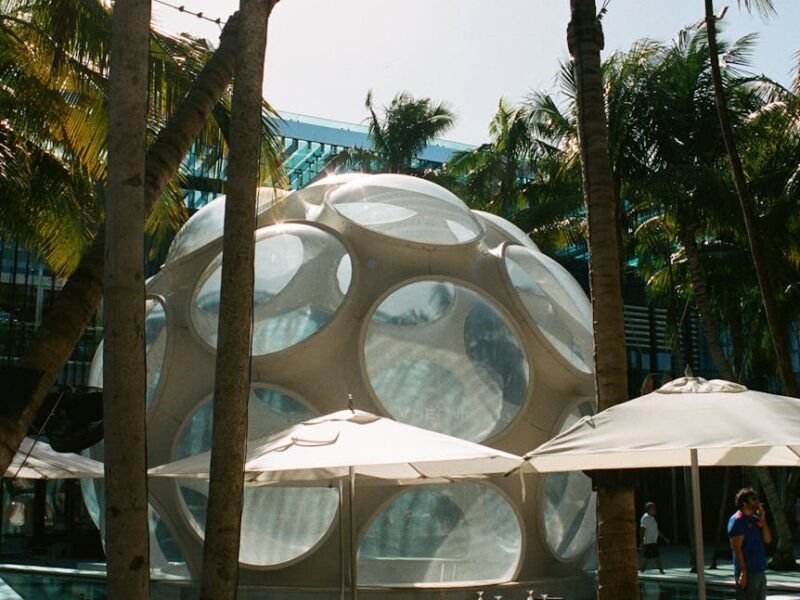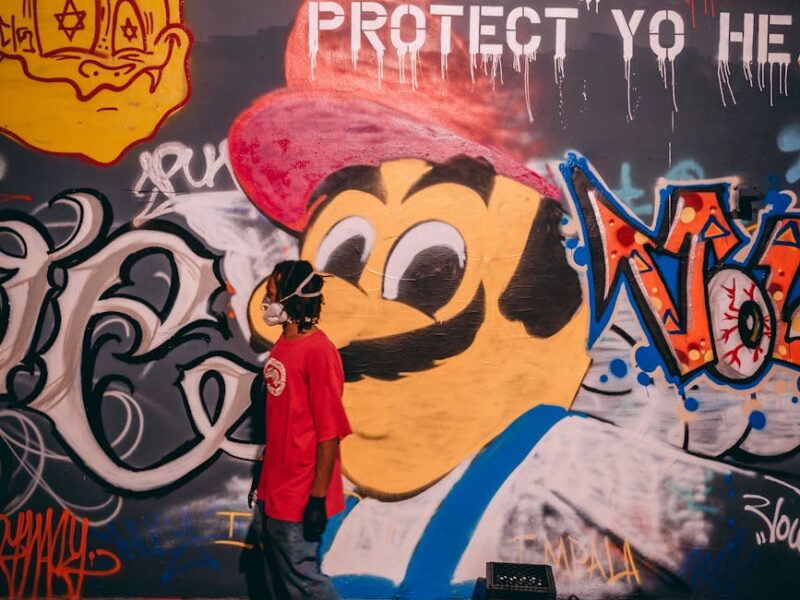Midtown Miami has quickly emerged as one of Miami’s most vibrant and transformative neighborhoods. Situated between the Miami Design District and Wynwood, Midtown has carved out its own identity, blending elements of design, culture, urban living, and commerce. Over the past decade, it has grown into a hub for residents, visitors, and businesses alike, offering a mix of high-rise condominiums, trendy retail spaces, art galleries, and restaurants.
The significance of Midtown Miami lies not only in its architectural design but also in the way it fosters community engagement, attracts innovative businesses, and creates a lifestyle centered around modern urban living. This post delves into Midtown Miami’s history, its role as a design-forward district, and its influence on the local economy and tourism.
A Brief History of Midtown Miami
Midtown Miami’s development is relatively recent, as the area was largely industrial up until the early 2000s. The neighborhood was primarily known for its proximity to the Florida East Coast Railway yard. However, as Miami’s real estate boom took hold in the early 2000s, developers saw potential in the underutilized land. The concept of Midtown Miami was to create a self-contained urban village, offering a mix of residential, commercial, and cultural spaces. With an emphasis on walkability and community, the area was designed to attract young professionals, creatives, and those seeking a more urban, connected lifestyle.
Midtown Miami officially began to take shape with the development of Midtown Miami Residences and Midtown Boulevard. These high-rise residential towers and open public spaces created an environment that merged modern living with convenience, all while offering quick access to the vibrant cultural centers of Wynwood and the Design District.
Design and Architecture: A Blueprint for Modern Living
One of Midtown Miami’s standout features is its commitment to innovative design and architecture. The neighborhood was built with sustainability and urbanism in mind, blending modern architectural aesthetics with functional living spaces. This focus on design has attracted a range of luxury residential projects, each with its unique architectural style. Buildings such as Midblock and Two Midtown are prime examples of sleek, contemporary architecture that integrates luxury living with practical urban conveniences.
In terms of retail and commercial design, Midtown Miami is known for its pedestrian-friendly layout, wide sidewalks, and expansive public spaces. The Shops at Midtown Miami, a central feature of the neighborhood, offers a seamless blend of outdoor shopping and dining with architecture that fosters a communal atmosphere. The open-air design, coupled with expansive green spaces and sculptures, makes it an inviting area for both residents and visitors to gather, shop, and socialize.
The Influence of the Design District
Midtown Miami’s proximity to the Miami Design District has had a profound influence on its evolution as a neighborhood. While the Design District is world-renowned for its luxury fashion boutiques, art galleries, and high-end design showrooms, Midtown offers a more approachable, everyday experience of design and lifestyle. The synergy between these two neighborhoods is evident, as many residents and visitors frequent both areas, with Midtown offering a more relaxed and residential complement to the high-end aesthetic of the Design District.
Midtown itself has become a destination for creatives and those working in the design field, thanks in part to the presence of co-working spaces, boutique agencies, and galleries. This has created a cross-pollination of ideas and aesthetics between Midtown’s modern urban vibe and the more avant-garde, high-fashion world of the Design District. The result is a neighborhood that feels fresh, stylish, and always on the cutting edge of design trends.
Midtown’s Impact on Miami’s Economy
As Midtown has developed, so too has its role as a significant driver of Miami’s local economy. The area’s mixed-use development strategy has attracted both residential and commercial investments, with a growing number of businesses choosing to set up shop in Midtown. The neighborhood’s central location, between the Design District and Wynwood, offers easy access to other key areas of Miami, making it an ideal place for businesses to thrive.
Retail in Midtown has been particularly successful, with The Shops at Midtown Miami housing an array of both large chain stores like Target and West Elm, as well as boutique shops that cater to the neighborhood’s more design-conscious residents. The presence of large retailers alongside local businesses has contributed to the area’s economic growth, attracting shoppers from all over Miami.
In addition to retail, Midtown’s dining scene has flourished, becoming a hotspot for foodies. Restaurants like Sugarcane Raw Bar Grill and Suviche offer diverse culinary experiences, from sushi to Latin fusion, which reflect Miami’s multicultural influence. The neighborhood’s reputation for excellent dining has drawn locals and tourists alike, adding another layer of economic vitality.
Community and Urban Living in Midtown
What makes Midtown Miami stand out is its focus on community and connectivity. The neighborhood was designed with walkability in mind, encouraging residents to leave their cars behind and explore the area on foot. The wide sidewalks, green spaces, and pocket parks make Midtown one of the most pedestrian-friendly areas in Miami.
Midtown also boasts a strong sense of community, which is reflected in its regular events and gatherings. The Midtown Miami Art Walk, for example, is an event that brings together local artists, residents, and businesses in a celebration of creativity and culture. Similarly, the Midtown Farmers Market is a popular weekly event that supports local farmers and artisans, giving residents an opportunity to engage with their community while supporting sustainable practices.
As more people move into the area, Midtown continues to grow as a residential hub for young professionals, creatives, and families seeking an urban lifestyle with a community-oriented focus. The neighborhood’s dog parks, outdoor fitness classes, and cycling paths further enhance the quality of life for residents, offering a balanced lifestyle where work, leisure, and wellness intersect.
The Future of Midtown Miami
Looking ahead, Midtown Miami is poised for continued growth. New developments are constantly in the works, with luxury high-rises, additional retail spaces, and more green spaces planned for the future. The neighborhood’s central location, along with its vibrant community and proximity to Miami’s top cultural districts, makes it one of the most sought-after areas for both real estate and tourism.
Midtown’s importance to Miami’s cultural and economic landscape cannot be understated. It is a model for modern urban development, offering a glimpse into the future of Miami as a city that embraces both innovation and community. For residents and visitors alike, Midtown Miami is more than just a neighborhood—it’s a lifestyle.
In conclusion, Midtown Miami’s significance lies in its ability to blend the best elements of urban living, design, culture, and commerce into one cohesive experience. Its strategic location, design-forward architecture, and community-driven ethos have made it one of the most exciting and dynamic areas in Miami, attracting both new residents and visitors from all over the world. As it continues to evolve, Midtown is set to play an even greater role in shaping the future of Miami’s urban landscape.



